This post moves away from the peaceful, rural villages of previous craft profiles, onto the bustling, polluted and noisy city of Ahmedabad. This city has been named the ‘Manchester of the East’ because of its rich and ancient history of textile production. The city is well-known for its block printing, and was the home of the trade of saudigiri printed textiles for the Thai market which began about two hundred years ago, reached its peak at the turn of the century, but declined during the Second World War. The saudigiri motifs share more similarities to those of the malir, jimhardi and haidharo block prints for the skirts of women in Gujarat and Rajasthan. They are rich in bhuti (single repeated flower) and jaal (trellis) designs. Sadly, like many other craft practices in India, it has never been revived. This also had a negative effect on the producers of blocks for this trade – the Gujjars in Pethapur, a village about 30 km from Ahmedabad. This trade is only just being sustained (there are five block making workshops now in Pethapur when about fifty years ago there were twenty five), by the ajrakh block printers in Kutch, block printers in Rajasthan and some block printers in Ahmedabad.

Amongst these are the artisans of the Mata ni Pachedi (Mother Goddess temple cloths), one of the few craft practices in Ahmedabad that is keeping in close touch with its history, existing as a traditional hand craft in a fast modernising city of big industry. Like the ajrakh block printing of Kutch, it is a surprise that this craft has managed to survive in such a fast moving world, with its slow, complex and extensive process and materials that were in use when the craft first began. On my most recent visit to Ahmedabad, I was taken to see the master Mata ni Pachedi artisan Chitara Jayantilal Kanchanlal who also featured in the series Treasures of Indian Art presented by Griff Rhys Jones aired in 2011. The artisan and his family work in a modest sized workshop down a small dusty path in the heart of the city, about 2 km from the National Institute of Design. It was one very helpful member of the staff from the NID who took me to meet Jayantilal.


Along with temple cloths, Jyantilalbhai and his family also produce block-printed cloths, dyed and kalamkari (hand-painted) cloths for wedding ceremonies and for commercial use, and use predominantly natural dyes.
Mata ni Pachedi are produced as an offering and displayed in temples to honour the Mother Goddess – Mata, produced by the Vaghari community, one of many communities throughout India that worship the Mata. The imagery displays the Mata as central, dominating figure, usually seated or standing on a throne or animal, brandishing a weapon to ward off the purveyors of evil. Accompanying imagery is taken from narratives from religious epics such as the Puranas.

The black outline is drawn with the twig of the babul tree as a kalam (pen) using an iron sulphate paste, and the white areas are bleached by drying in the sun. The red is created using madder or synthetic alizarin. The centre panel is drawn using mordants. The Mata is always hand painted but accompanying images, additional figures and animals are either block printed or painted.



Traditionally production of these cloths centred around the Sabarmati river. There being less artisans of Mata ni Pachedi now, means it is more difficult to see cloths laid out on the banks to dry as they once were. Furthermore, the use of the river banks for both living and cloth washing is becoming more and more difficult with further city development, as plans to build residential and commercial complexes are under way.
I last visited Jyantilalbhai in in 2011, and am eager to return to Ahmedabad to see how the craft is going for Jyantilal and other artisans. If anyone has more recent updates on this, please do comment!
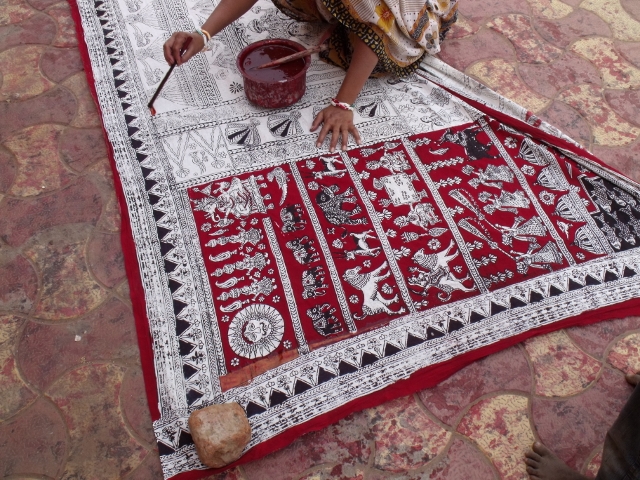

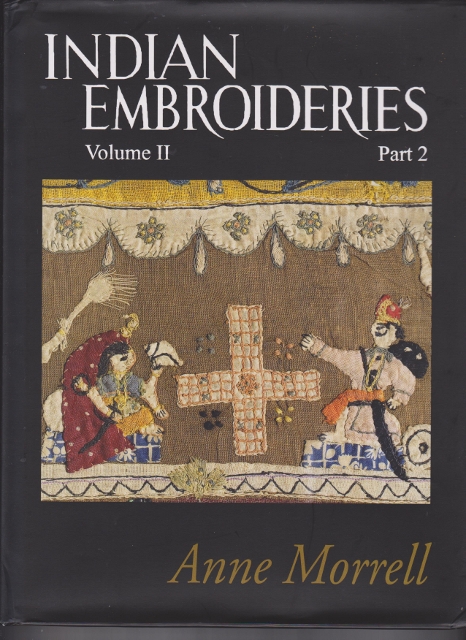
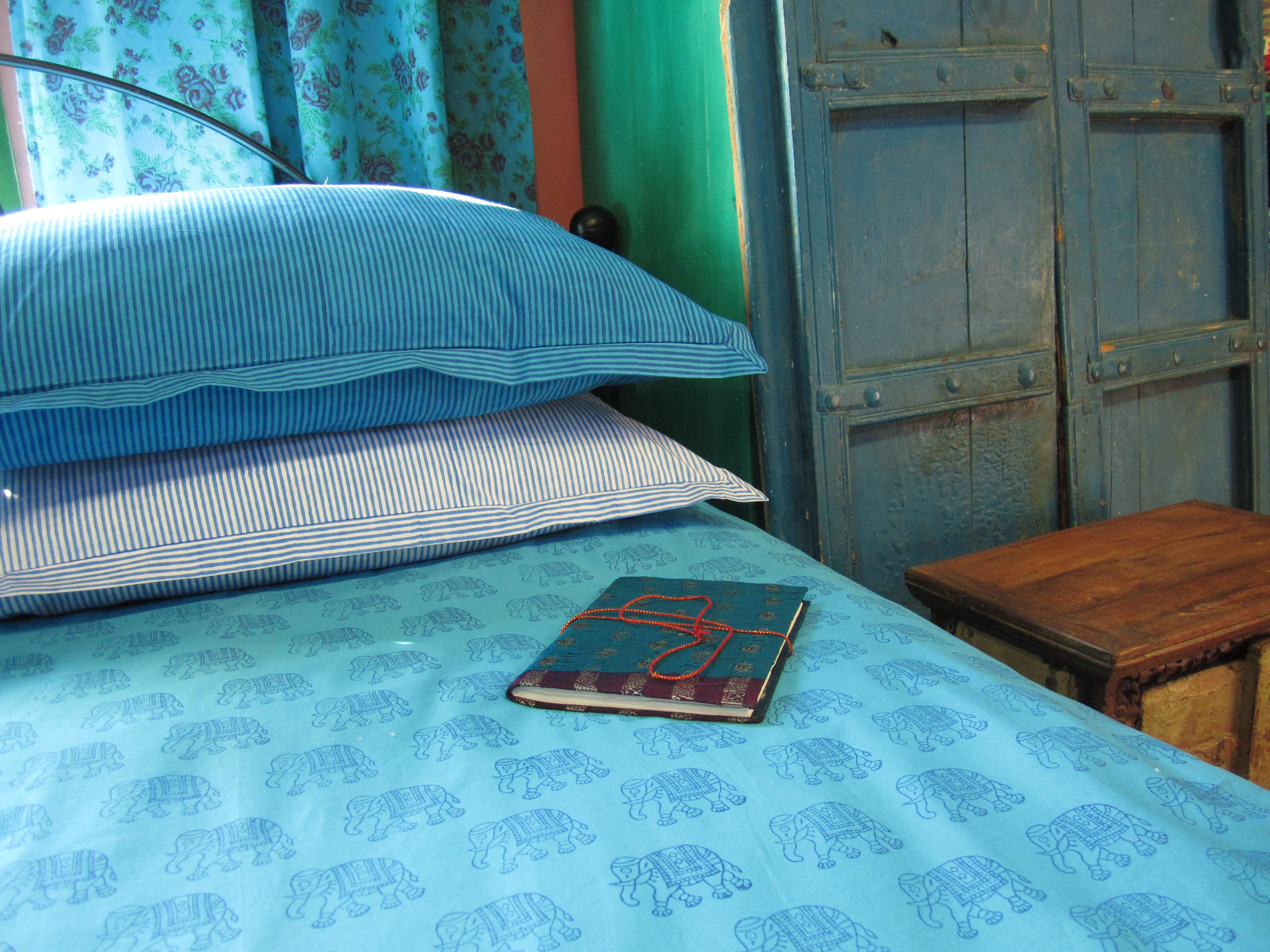
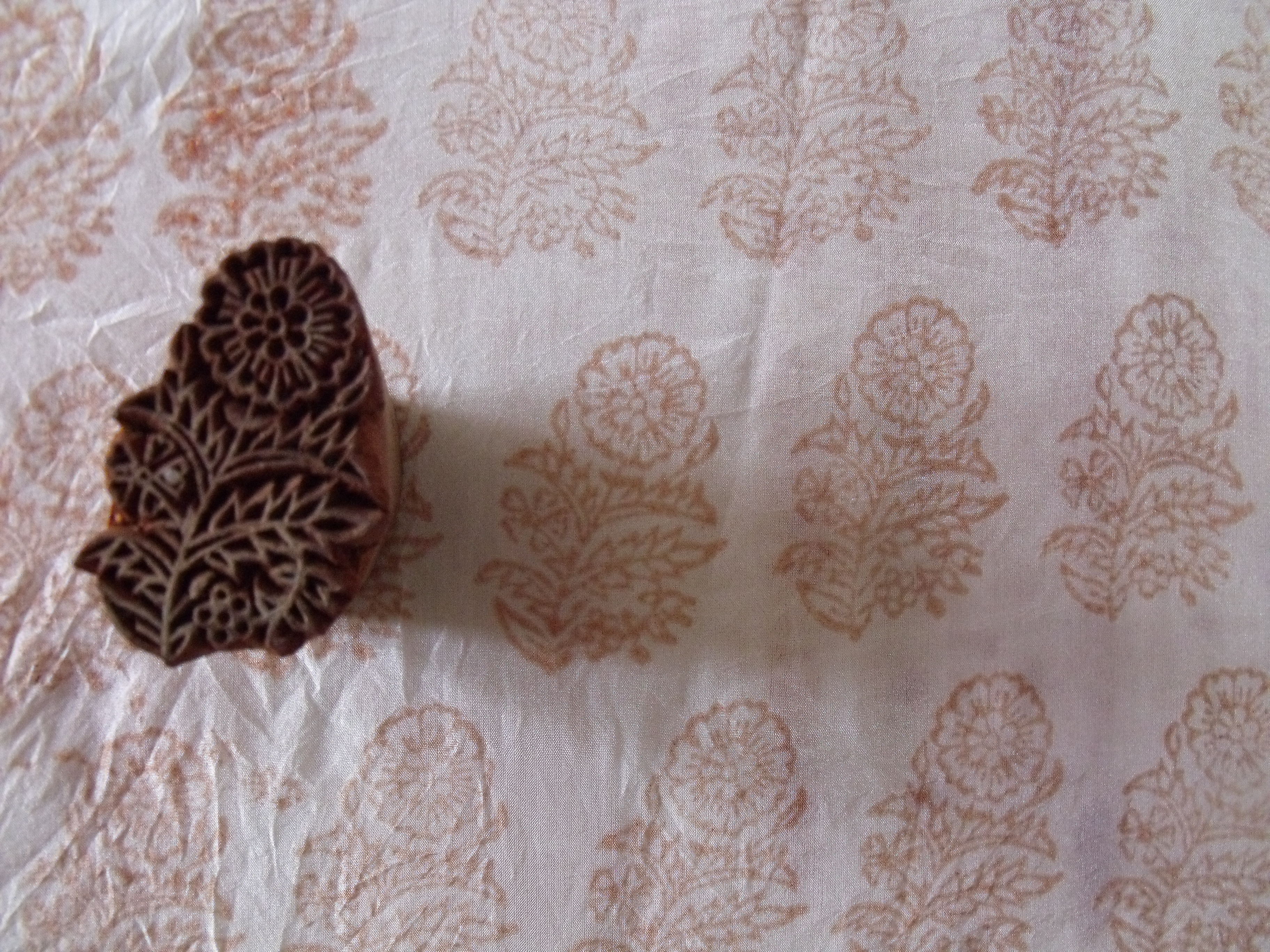
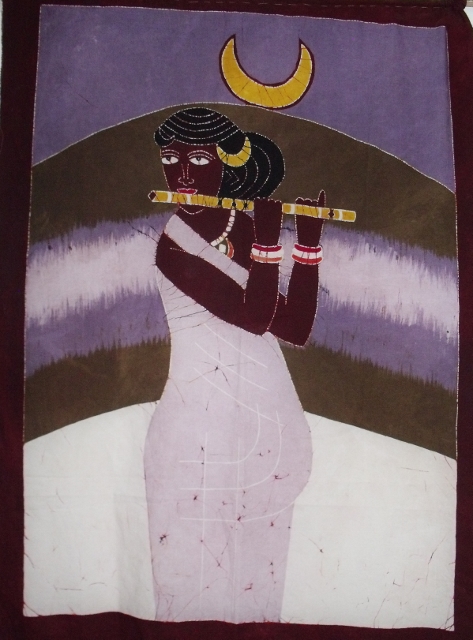
13 Comments
Jill
Hello,
I would love to buy some of the hand-made blocks; they are beautiful! Might you have any people I could get in touch with? Thanks so much.
Hello,
The best place to buy these blocks are directly from the block makers. There is a small town near to Gandhinagar (about 40km from Ahmedabad) where they make them. Let me know if you might be visiting there and I can send you some more details. If buying on the internet, the easiest place to get them are sites like ebay or etsy.com. If I see any more I’ll let you know!
jignasha
this info is very helpfull 4 me plz give me more info. 4 mata ni pachedi pllzzzz.
ratna
I am in india where can i buy Mata,warriors/muscians/ geometric /avalible at Ahmadabhad , also need jayanthilal email and contact no.
Payal Patel
I am a teacher in a school in ahmedabad,i would like my students to visit the place and see how block printing is done and move through the cultural heritage of gujarat.
I hope you will welcome my kids.
HARBINDER KAUR GOTRE
hello sir,
this information is very helpful for me. thanx for posting the same. i want jayantilal’s contact details as i am persuing phd. on the same topic. i am residing in ahmedabad so please it is my humble request to u to please give details which will be helpful for me in my research work.
regards,
harbinder kaur
Hi Harbinder, sorry for the late response. If you go to NID in Ahmedbad – http://www.nid.edu/, somebody in the Textiles department will be able to advise, or arrange a trip to see Jyantilal.
K.R.Mali
Very nice painting
hemant sethia
if you want to lean hand block printing with vegetable dyes , jai texart jaipur is conducting workshop on hand block prints – 1 day and 2 days workshop at their bagru hand block printing workshop which is going to be converted in to school of hand crafted textile shortly . interested person can search on net
Manisha
Really nice.. Matani pachedi I want to see.. how to work they do.. plz give me a contact details of Jayanthi bhai.. because I m aslo from Ahmedabad.. and I m studing in masters in textile and clothing department from Ms university Baroda..
Hi, thanks for your comment. I will send you Jayanthi bhai’s details in an email. Ruth
Durga
Hello, I am a student from Symbiosis, Pune, currently pursuing Fashion Communication. I am interested in knowing more about mata ni pachedi as I am currently working on a craft documentation project and I’d appreciate if you could share Jayantilal bhai’s contact details. Thank you :))
Anon
Hello,
I plan to work with kalamkari, block printing, and hand-embroidery techniques for my next collection. My brand is called Tsaku clothing.
Could you send me details regarding artists and vendors who I could work with?
Thank you 🙂